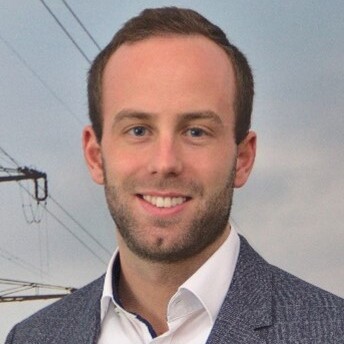
HydrogREenBoost
Hydrogen for securing power grid operation
The project name combines the words “Hydrogen”, “RE” and “green” for renewable energy, and “Boost” for grid booster – a battery storage system to support the power grid.
Background
To make the energy transition a reality, we need alternatives to fossil fuels. Hydrogen is set to play a key role in several sectors. The Karlsruhe Institute of Technology, Ulm University of Applied Sciences, TransnetBW and the Centre for Solar Energy and Hydrogen Research Baden-Württemberg are investigating the potential role of hydrogen in power grid operation as part of their “HydrogREenBoost” research project.
Challenge
Electricity grids are facing a constantly growing number of challenges: The demand for electricity is increasing, while the generation sector is undergoing radical change. This calls for extensive reorganisation and development of the electricity grid. Innovative concepts and solutions are urgently needed to ensure that the system can continue to operate safely in the future and to protect it from overloads.
PROJECT OUTLINE
Aim of the concept: Higher utilisation and stabilisation of the power grid. This means that fewer power lines and stabilisation facilities are required.
Potential applications in power grid operation include:
- Redispatch before (preventive) and after (curative) faults occur
- Grid reserve and capacity provision
- Provision of system inertia
- Balancing energy: both positive (battery/turbine) and negative (electrolysis/battery)
- Provision of reactive power
- Black start capability: support for grid reconstruction
In addition, secondary applications are also being investigated, such as the utilisation of waste heat from the plants.
Further development compared to the grid booster
The hydrogen hybrid grid booster is a solution for increasing storage requirements. To ensure a rapid system response, the concept continues to rely on an electric battery storage system, which is replaced by a hydrogen turbine after a brief interval.
Ideas behind the innovative project: The TransnetBW grid booster concept
A pilot grid booster with a 250 MW/250 MWh battery will be installed by TransnetBW in Kupferzell, Baden-Württemberg. See here for further information about the grid booster project in Kupferzell.
HydrogREenBoost project timeline and milestones
Work package I
Establishment of a grid laboratory: The interaction of the technical elements is trialled in the laboratory.
Work package II
Modelling the system and grid capability: The technical components are modelled in detail and electricity load flows are calculated. A range of possible locations are assessed.
Work package III
Development of an implementation concept: A concept will be created for the industrial-scale use of a HydrogREenBoost plant that is both compatible with the system and cost effective.
FAQ
Frequently Asked Questions
The HydrogREenBoost turbine must be supplied with hydrogen when in use. Hydrogen must therefore be available at all times to ensure reliable grid operation. The expansion of the gas grid is currently being planned and the necessary infrastructure will be available in the medium term. Initially, the HydrogREenBoost project is still planning to use a hydrogen storage facility. A connection to the hydrogen grid, however, is equally conceivable.
The aim of the HydrogREenBoost is to provide important system services for the electricity grid. The system can be most effective where there are frequent power shortfalls in the electricity grid. In the event of a shortfall, the transmission capacity of the electricity grid is usually insufficient to transport the energy from the offshore wind farms in the north to the centres of consumption in the west and south. In such cases, generation in the north has to be curtailed and ramped up in the south. The HydrogREenBoost can be used to benefit the system if it is located in the west or south, where it can feed in energy in the event of a power shortfall and alleviate the shortfall.
The north of Germany will probably have more locally produced hydrogen than the south because the windy coast is a good location for electrolysers. However, the HydrogREenBoost can only act as an instrument of grid security where its storage is needed as a system service: In the west and south of Germany.
This question is currently being analysed and evaluated in the project. Ultimately, the economic benefits of the different system concepts are to be optimised. Larger centralised plants can exploit economies of scale and thus reduce costs. However, decentralised systems also have the potential to work in a grid-friendly and economically viable way. Both concepts have advantages and disadvantages. The solution for the entire energy system will probably be a mixture.
A large-scale HydrogREenBoost plant that is to be utilised at the extra-high voltage level must provide power in the high megawatt range. Fuel cell systems are currently unable to provide this level of power. This is why the HydrogREenBoost system is designed for a hydrogen turbine. In addition, the investment costs for fuel cell systems in these dimensions are significantly higher than for gas turbines.
Media library
- Starte Download von: Video HydrogREenBoostVideo HydrogREenBoost
Contact
Do you have any questions about the project or would you like to talk to us about it?
Send an email to Jonas Lotze, HydrogREenBoost project manager.


